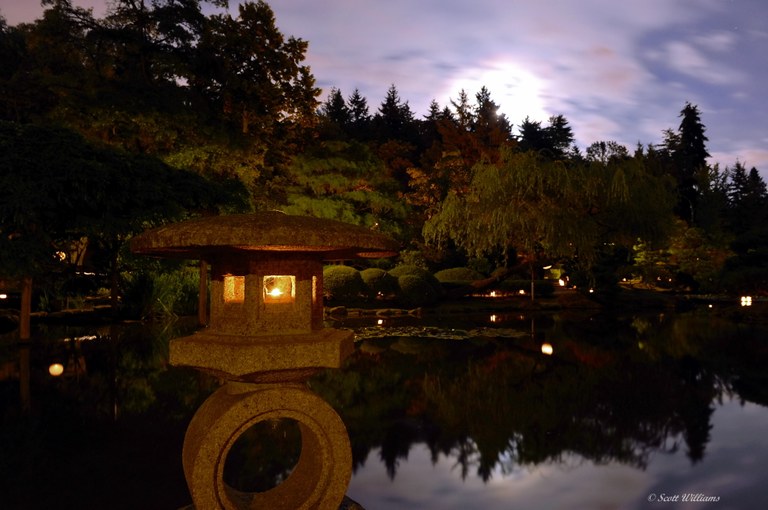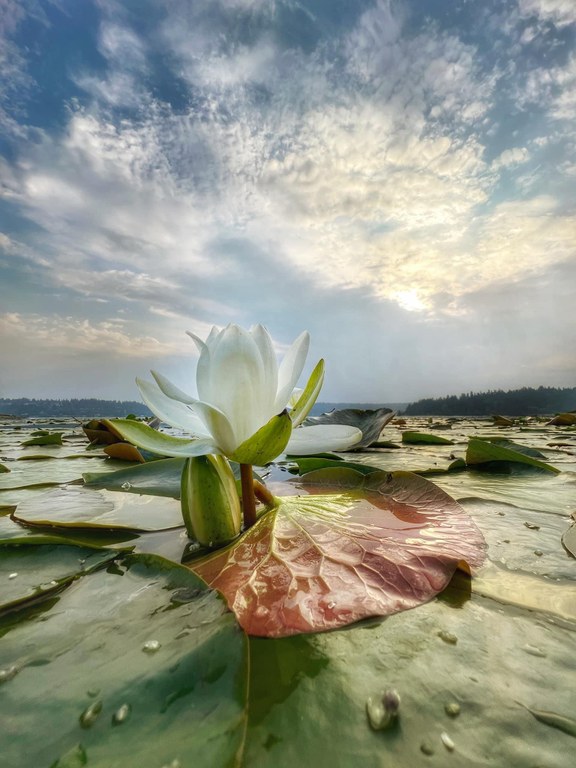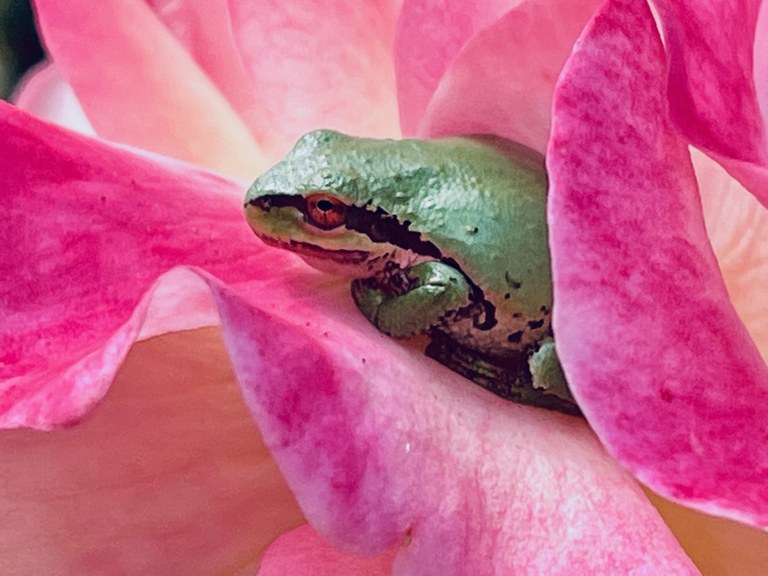5 Reasons Why Local Trails are Essential to Mental Health
When nature is in reach, so are its healing benefits.
Think of the last time a hike helped you feel better. Did you experience clarity? Awe? Connectedness? Peace?
Heidi Schreiber-Pan, PhD, has identified these sensations as some of the many positive effects of time spent outdoors on mental and emotional health. She is the founder of the Center for Nature Informed Therapy, clinical director at Chesapeake Mental Health in Maryland and author of multiple books including “Taming the Anxious Mind.” The following insights are from her recent talk, “Taming the Anxious Brain with Nature in Mind,” hosted by the University of Washington’s Nature and Health initiative.
The benefits of long hikes are many — but wilderness trails are only part of the solution to rising mental health troubles in the U.S. Most Washingtonians aren’t near enough to front or backcountry trails to spend time on them daily, and economic and transportation barriers prevent many people from accessing trails at all.
That’s where local trails, parks and green spaces come in. When nature is within walking distance from your building or neighborhood, we can access the benefits of nature on a daily basis. We don’t have to hike for miles into the forest to experience the positive effects of bird songs, fresh air and swaying trees.
Dr. Schreiber-Pan’s findings make it clear that access to nature is not just a nice-to-have, it’s a must-have for mental health. Here are five reasons why.

Seattle's Japanese Gardens are beautiful at night. Photo by Scott Williams.
Nature helps ease our anxiety
While everyone experiences temporary spikes of anxiety from time to time, chronic anxiety causes the sympathetic nervous system — which activates our “fight, flight or freeze” response — to be constantly active. One result of this chronic stress response is rumination, which makes it difficult to focus on responsibilities and to enjoy activities that we would normally find fun. Anxiety takes a toll on our minds and bodies.
Dr. Schrieber-Pan reports that there is a significant correlation between walking in nature and a reduction in that sympathetic nervous system activation. In other words, when the brain processes the sensations of being outside, it signals to the nervous system it can turn down the fear response. In turn, our ruminations can slow down so that we can enjoy the experience in the present moment.
Being outdoors is truly healing, and the more often we can access nature, the more frequently we can rest our minds and heal from the little traumas of everyday life.

A flower blooms from a lily pad in a Lake Washington. Photo by Diana Vinh.
Allies in existence: Being in nature helps us feel less alone
No matter how “outdoorsy” we are, life requires us to spend a lot of time disconnected from the natural world. On average, Americans spend approximately 90 percent of their time indoors, according to the EPA. Most folks get food from a store rather than directly from the land, and only on occasion do we feel the earth with bare feet.
Going for any stretch of time without time in nature can build up what Dr. Schreiber-Pan calls “eco-separation.” One component of eco-separation is “species loneliness,” a deep, unnamed sadness resulting from disconnection from the ecosystems where we live and the living beings that surround us. Moving through the world with species loneliness, she says, is like going to a party where you don’t know anyone or their story.
Regular time spent in nature is an antidote to species loneliness. We can think of non-human animals, plants and other life forms as our “allies in existence,” Dr. Schreiber-Pan said. When you choose a favorite tree on a neighborhood path, get to know where the squirrels build their nests or learn when different types of mushrooms sprout each year, you’re building a sense of familiarity with nature that can even reduce feelings of isolation elsewhere in life.
Local trails enable us to get outside and remember that we are not separate from, but part of, a vast community of living beings. And it feels really good to know everyone at the party.
Soft fascination: Time outdoors helps our brains rest
Daily life in 2023 requires a lot of the human brain. On any given work day, we’re asking the frontal lobe, which controls executive functioning, to be active for 8, 12 or more hours. With work or school, family, relationships and the news all competing for attention, we often end up multitasking, which further stresses our systems.
Try as we might to stay “on,” our brains get tired from constant stimuli and interactions. Just like the muscles need a break in between weightlifting reps, the brain needs rest.
That’s where time in nature works its magic. The brain prefers images that are uncomplicated, releasing natural opiates at the sight of scenes that are easy to process and require few decisions. Because plants, animals, water and landscapes are especially easy for our brains to process, even a short walk outside gives the brain the opportunity to rest. Dr. Scheiber-Pan calls the phenomenon “soft fascination.” While outdoors, you can be awake and interested while also relaxed.
Taking breaks outdoors not only adds moments of enjoyment and relaxation to your day, but also lets your brain recharge, enabling you to return to your responsibilities more focused and refreshed. So, next time you’re feeling your focus wane, know that stepping outside for a walk is worth the time.

Balsamroot at Riverside State Park in Spokane. Photo by Bruce Turner.
Facing challenges outdoors helps us build resilience
A mostly indoor life requires us to suppress a lot of the behaviors that make us human, like taking risks, adapting to nature’s rhythms and managing discomfort. As a result, average distress tolerance is diminishing. And when we’re feeling anxious, the brain tries to convince us that situations are dangerous when they are really just uncomfortable.
But exposure to challenges outdoors is a form of “psychological inoculation,” said Dr. Schreiber-Pan. Experiences of “safe suffering,” (or, type 2 fun, if you will), abound in nature, and they can help us build resiliency to face more difficult situations in everyday life, indoors or out.
You don’t have to go out into the wilderness to build resilience; feeling the biting cold on a winter morning walk or persisting when the rain begins to pour during your stroll through the park can remind your brain that you are, in fact, able to take on challenges.
The natural world shifts our perspective
When we experience pain, whether it’s physical, mental or emotional, it’s hard to focus on anything but ourselves. By keeping us on edge, anxiety tends to narrow our perspective such that our thoughts become consumed by our own stories and it’s more difficult to consider others’ perspectives.
But even in the depths of all-consuming anxiety, nature has a way of helping us regain perspective: awe. Experiences of awe, like standing next to a towering cedar or looking up at the stars, can pull us out of our own individual stories and back into the vast, collective story of the world. That feeling of smallness can help us feel our own interconnectedness with the world around us. According to Dr. Schreiber-Pan, research has shown that people who have more frequent experiences of awe tend to feel more connected with others and take on more behaviors that are beneficial to the common good.
Here’s the wonderful thing: We don’t have to go to the crashing Pacific coast or to the top of Mount Rainier to experience awe. There’s awe to be found in the wonder of our neighborhood parks and backyards. Dr. Schreiber-Pan described leading “awe walks” where participants were assigned to find an item in nature that brings them a sense of awe.
“People bring the most ordinary, extraordinary things back,” she said.
That’s what local trails provide: Daily access to the ordinary, extraordinary experiences that remind us we are part of something bigger — and remind us that we belong.
Ensuring all Washingtonians can safely access the outdoors is not just a matter of individual mental health, it’s a matter of public health equity. That’s why WTA is investing in urban trails through our Trail Next Door campaign.
If you feel strongly that nature — and all of the ways it can heal the mind and spirit — should always be in reach, become a monthly donor today. Your ongoing support will enable WTA and our partners to build and maintain trails in areas that previously did not have accessible green space, like Glendale Forest. With the countless mental health benefits of being outdoors, a donation to WTA is not just a gift to trails — it’s a gift to your community.
Photo Spotlight: A Mindful Moment on a Local Trail

Mindfulness can help open up a world we didn't see before. Photo by Carrie Carriveau.
When Carrie Carriveau submitted her photo of a tree frog in a rose to our 2022 Northwest Exposure contest, she wrote about the importance of mindful moments on nearby trails.
"I found a new appreciation for my local parks during the past couple of years while coping with the pandemic. This photo, taken at Point Defiance Rose Garden in Tacoma, is a small window into the peace and tranquility that can be found close to home without the need for potentially expensive hiking gear, four-wheel drive, or route-finding skills.
Walking the fragrant aisles of roses, I was lucky to spot this male Pacific tree frog, nestled between the cool and silky rose petals. His small sanctuary brought me wholly into the moment and, for a time, I was able to disconnect from the anxiety of current events and just be.
Access to nearby parks and recreation areas is important for healthy communities. I hope this photo or my experience will inspire someone to take time for themselves to enjoy an unexpected escape close to home."


Comments